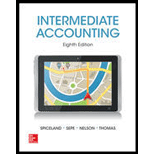
1.
Ratio Analysis
Ratio analysis is made by the company to evaluate the performance and risk of a company.
To Determine: 1. Current liabilities, 2. Long-term liabilities, 3.
To Determine: the amount of current liabilities of Consultant G:
2.
Long-term liabilities:
Long-term liabilities are those liabilities which represent the long-term obligations of the company which is not satisfied with in the next year or operating cycle whichever is longer. To repay these long-term liabilities they do not require the current assets or the current liabilities for the repayment of the debt.
To Determine: the amount of long-term liabilities Consultant G:
3.
Accounts receivable:
Accounts receivable is an asset of the firm, and it refers to the amount to be received with in a short period from customers upon the sale of goods and services on account. In other words, accounts receivable are amounts customers owe to the business.
To Determine: the amount of accounts receivable Consultant G:
4.
Acid-test ratio:
Acid test ratio is the ratio in which the company is takes its quick assets to repay its current obligations. Acid-test ratio shows the relationship between the quick assets and the current liabilities.
To Determine: acid-test ratio Consultant G:
Want to see the full answer?
Check out a sample textbook solution
Chapter 3 Solutions
INTERMEDIATE ACCOUNTING
- Alicia Logistics purchased a conveyor belt system for its distribution center at a cost of $105,800. The system has an estimated residual value of $8,600 and an estimated useful life of 12 years. What is the amount of the annual depreciation computed by the straight-line method?arrow_forwardI am looking for help with this general accounting question using proper accounting standards.arrow_forwardFinancial accountingarrow_forward
- Please help me solve this general accounting problem with the correct financial process.arrow_forwardMCQarrow_forwardNirvana Technologies has $85,000 in assets. They also have $32,000 in liabilities and $8,500 in expenses, and they paid out $10,000 in dividends this year. The extended accounting equation is assets = liabilities + (revenue - (expenses + dividends)). What would their revenue need to be for their accounts to be in balance?arrow_forward

 AccountingAccountingISBN:9781337272094Author:WARREN, Carl S., Reeve, James M., Duchac, Jonathan E.Publisher:Cengage Learning,
AccountingAccountingISBN:9781337272094Author:WARREN, Carl S., Reeve, James M., Duchac, Jonathan E.Publisher:Cengage Learning, Accounting Information SystemsAccountingISBN:9781337619202Author:Hall, James A.Publisher:Cengage Learning,
Accounting Information SystemsAccountingISBN:9781337619202Author:Hall, James A.Publisher:Cengage Learning, Horngren's Cost Accounting: A Managerial Emphasis...AccountingISBN:9780134475585Author:Srikant M. Datar, Madhav V. RajanPublisher:PEARSON
Horngren's Cost Accounting: A Managerial Emphasis...AccountingISBN:9780134475585Author:Srikant M. Datar, Madhav V. RajanPublisher:PEARSON Intermediate AccountingAccountingISBN:9781259722660Author:J. David Spiceland, Mark W. Nelson, Wayne M ThomasPublisher:McGraw-Hill Education
Intermediate AccountingAccountingISBN:9781259722660Author:J. David Spiceland, Mark W. Nelson, Wayne M ThomasPublisher:McGraw-Hill Education Financial and Managerial AccountingAccountingISBN:9781259726705Author:John J Wild, Ken W. Shaw, Barbara Chiappetta Fundamental Accounting PrinciplesPublisher:McGraw-Hill Education
Financial and Managerial AccountingAccountingISBN:9781259726705Author:John J Wild, Ken W. Shaw, Barbara Chiappetta Fundamental Accounting PrinciplesPublisher:McGraw-Hill Education





